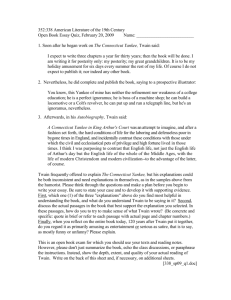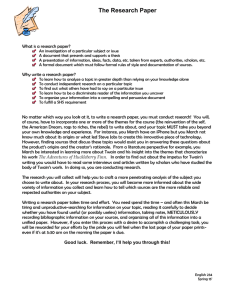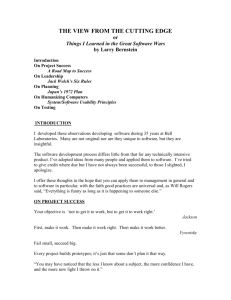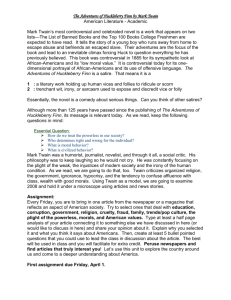Collections Grade 11 Guiding Questions Collection 5 “The Lowest
advertisement
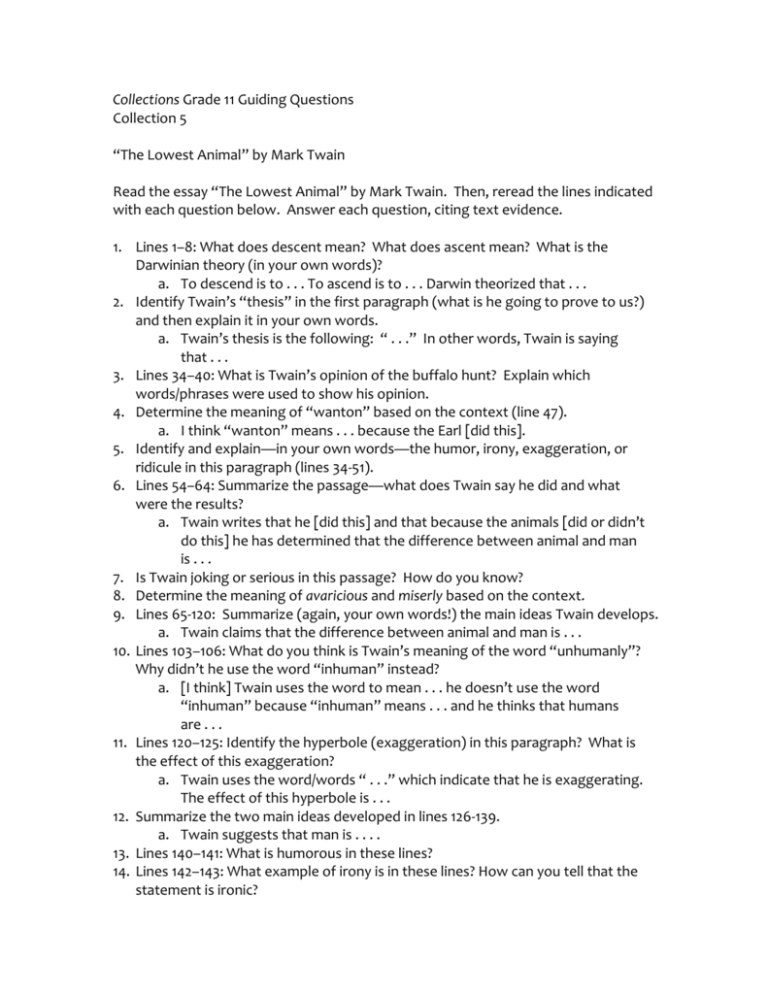
Collections Grade 11 Guiding Questions Collection 5 “The Lowest Animal” by Mark Twain Read the essay “The Lowest Animal” by Mark Twain. Then, reread the lines indicated with each question below. Answer each question, citing text evidence. 1. Lines 1–8: What does descent mean? What does ascent mean? What is the Darwinian theory (in your own words)? a. To descend is to . . . To ascend is to . . . Darwin theorized that . . . 2. Identify Twain’s “thesis” in the first paragraph (what is he going to prove to us?) and then explain it in your own words. a. Twain’s thesis is the following: “ . . .” In other words, Twain is saying that . . . 3. Lines 34–40: What is Twain’s opinion of the buffalo hunt? Explain which words/phrases were used to show his opinion. 4. Determine the meaning of “wanton” based on the context (line 47). a. I think “wanton” means . . . because the Earl [did this]. 5. Identify and explain—in your own words—the humor, irony, exaggeration, or ridicule in this paragraph (lines 34-51). 6. Lines 54–64: Summarize the passage—what does Twain say he did and what were the results? a. Twain writes that he [did this] and that because the animals [did or didn’t do this] he has determined that the difference between animal and man is . . . 7. Is Twain joking or serious in this passage? How do you know? 8. Determine the meaning of avaricious and miserly based on the context. 9. Lines 65-120: Summarize (again, your own words!) the main ideas Twain develops. a. Twain claims that the difference between animal and man is . . . 10. Lines 103–106: What do you think is Twain’s meaning of the word “unhumanly”? Why didn’t he use the word “inhuman” instead? a. [I think] Twain uses the word to mean . . . he doesn’t use the word “inhuman” because “inhuman” means . . . and he thinks that humans are . . . 11. Lines 120–125: Identify the hyperbole (exaggeration) in this paragraph? What is the effect of this exaggeration? a. Twain uses the word/words “ . . .” which indicate that he is exaggerating. The effect of this hyperbole is . . . 12. Summarize the two main ideas developed in lines 126-139. a. Twain suggests that man is . . . . 13. Lines 140–141: What is humorous in these lines? 14. Lines 142–143: What example of irony is in these lines? How can you tell that the statement is ironic? 15. Lines 145–147: Anaphora is the deliberate repetition of the first part of a sentence. What examples of anaphora are in these lines? What is the effect of the use of anaphora in this section of the text? a. One example of the use of anaphora is Twain’s repeated use of the phrase “ . . .” By using repetition, Twain is emphasizing [this point]. 16. Lines 160–166: What satirical technique is Twain using in this paragraph? a. Twain uses [humor, absurdity, exaggeration, ridicule . . CHOOSE ONE] by saying that . . . 17. Lines 167–177: summarize the conclusion.

